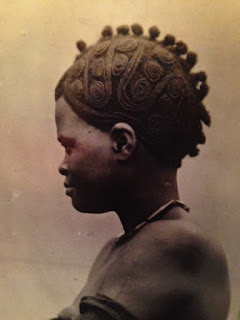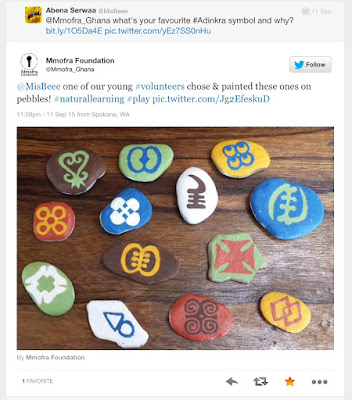Going back to ma roots
Today,
I learnt that my hair is heliotrichous - very curly – for those of you not in
the know. I also learnt that the use of the afro comb dates back 6,000 years
and engenders extraordinary symbolism.
Powerful symbolism
I
visited the exhibition on 17 August 2013 with my good friend and was
impressed at how the humble combing implement has evolved to something steeped in
so much political and social symbolism. In the same way that the dua’ afe has
inspired African nations – each with their unique take on designing the hair comb - the actual symbolism behind it has also
evolved.
In the Museum
of Archaeology & Anthropology, which is just a few feet away from the Fitzwilliam,
the afro comb experience truly comes alive. Three stages are set – the family
living room complete with the garish wallpaper, kitsch ornaments and some
wicked Ska playing in the background.
The second ‘room’ is the hairdressers with a great selection of 'Ebony', 'Black Hair' and other magazines for women of colour dating back to the 1980s...and essential for those long periods under the hair dryer. And last but not least, the iconic hair dryer itself...but with a difference.
Unlike your standard dryer that blows hot air or steam, this one tickles your auditory senses with hair stories from ordinary people piped through the dryer helmet. What a perfect end to a great day!
 |
Unknown model with beautifully intricate hair style
© Northcote W. Thomas circa 1910
|
For
example, in my country of origin – Ghana – the dua’afe (wooden comb) is linked
to femininity and beauty.
In Egypt, women would often cover their hair with wigs to ‘protect’ their womanhood as it was linked to fecundity. It also defined their social status.
In Egypt, women would often cover their hair with wigs to ‘protect’ their womanhood as it was linked to fecundity. It also defined their social status.
It
appears that Egyptians modelled their hairstyles on their Nubian neighbours
and much of the stylings that we see today can be traced back to Sudan,
Madagascar, Nigeria as well as other ancient African kingdoms.
This
information was just a snapshot of what I gleaned from a small but hugely
inspiring exhibition on the humble afro comb in the heart of Cambridge, England.
The
free exhibition Origins of the Afro Combs - 6000 years of Culture, Politics and Identity, curated by Sally-Ann Ashton at
the Fitzwilliam Museum, is on until 3 November 2013, and is well worth viewing. Even if
you are of African descent and think you know all there is to know about your
hair, I can guarantee that you will pick up a gem or two on the journey. I did!
Powerful symbolism
 |
| Afro comb image from exhibition programme photographed© MisBeee Writes |
Combs
may have started out as functional tools but soon became rooted in symbols
of femininity, womanhood, and beauty, which is reflected in some of the designs
displayed at the museum.
Move into the 60s and 70s and the comb grows teeth
(pardon the pun) and we see it emerge as a symbol of power, the struggle for equality and freedom in the Civil Rights
Movement.
Afros
become all the rage and having the afro comb jutting from the hair became part
of that statement. Even if you have not consciously realised it, many of you will
be familiar with the iconic fist afro comb. That design started life in the mind of Italian businessman Anthony R.
Romani in 1972.
On
to mass production – cue China – and with it an end to those rigid wooden combs
(that never lasted long in my hair). We move to a world where flexible plastic
versions in an array of colours become common place.
New and old
What
I loved about the exhibition was its unabashed and effortless ability to flit between time. We saw
artefacts dating back hundreds of years juxtaposed with examples of true
modernity – showing just relevant combs have always been in our lives.
As
we entered the exhibition, there is a salute to the Accompong Maroons who
successfully gained independence from Jamaica and colonial rule in 1738. Their
history and culture is captured through a series of highly decorative metal afro
combs made by Russell Newell in 2013.
Fast
forward 300 years and there is a display cabinet littered with de-curling weaponry to smooth every kink on your head. Artefacts include the infamous pressing comb, which
was patented by Annie Malone in 1900 and popularised by the famous Madam CJ
Walker.
There’s a not-to-be-missed documentary showing a Black woman going through the de-curling process complete with a '1950s' voice-over man speaking in received pronunciation. Fabulous!
And detailed descriptions from runaway slave adverts provided unique insight into how Black people styled their hair and what their 'superiors' thought of it. 'Woolly' hair was a common description...
Afro comb weaponry
There’s a not-to-be-missed documentary showing a Black woman going through the de-curling process complete with a '1950s' voice-over man speaking in received pronunciation. Fabulous!
And detailed descriptions from runaway slave adverts provided unique insight into how Black people styled their hair and what their 'superiors' thought of it. 'Woolly' hair was a common description...
Afro comb weaponry
Jumping
forward to the 21th century and the comb becomes synonymous with violence. The exhibition draws the audience's attention to fairly recent events in London where combs have been used to inflict pain on others and deemed to be dangerous weapons. The situation was perceived to be so bad that teenagers sporting them in their hair had them forcibly confiscated
by the police.
But
by far one of the best aspects of the exhibition for me was the black and white
pictures of men and women and their hair dating back to the 19th
century. These images were like delicate archaeological finds and featured
hairstyles that I fear have been discarded, buried and banished in the march
towards 'socially acceptable' modern hair styling.
There were pictures of young girls with intricate cornrows – not like what we have today – but ones that coil and loop around their head. These artistic styles, however, were not confined to just women. Men were considered to be as important in the hair grooming culture and were often featured devoid of hair but for a long pig tail at the back of the head, or micro dreads.
There were pictures of young girls with intricate cornrows – not like what we have today – but ones that coil and loop around their head. These artistic styles, however, were not confined to just women. Men were considered to be as important in the hair grooming culture and were often featured devoid of hair but for a long pig tail at the back of the head, or micro dreads.
 |
| Cote d'Ivoire master sculptor Kuakudili from 1930s and his striking hairstyle © Musée du quai Branly photographed by MisBeee Writes |
It
is interesting to see that over the last 20 years, the West has seen a revival
in hair grooming among males. And while this trend is still largely frowned upon in most
African societies (even though in antiquity it was more common place), these attitudes are slowly shifting.
Personal journey
Personal journey
This
exhibition lovingly weaves together history, politics and socialism but leaves
room for that personal experience. Everyone has their own intimate story to
tell whether that involves
being sandwiched between your mother's thighs or those Saturday outings to the hairdresser. For most Black people, hair grooming is a communal experience and this exhibition actively encourages visitors to share those stories and become a living, breathing part of the showcase.
 |
| Afro comb © Yahw Arts |
The second ‘room’ is the hairdressers with a great selection of 'Ebony', 'Black Hair' and other magazines for women of colour dating back to the 1980s...and essential for those long periods under the hair dryer. And last but not least, the iconic hair dryer itself...but with a difference.
Unlike your standard dryer that blows hot air or steam, this one tickles your auditory senses with hair stories from ordinary people piped through the dryer helmet. What a perfect end to a great day!
By
Kirsty Osei-Bempong
For more blogs on cultural exhibitions and hair posts like this check out
Hidden histories: Jamaica's colourful legacies
Cote d'Ivoire sculptures: unmasking the truth
Britain's Cutty Sark: from Chinese tea to Ghanaian cocoa
Dyeing to fit in
All comments are welcome on this page. If you are having trouble posting on the Google+ page, please share your views via Facebook here. and Twitter here.
Please be aware that you may not reproduce, republish, modify or commercially exploit this content without our prior written consent.
For more blogs on cultural exhibitions and hair posts like this check out
Hidden histories: Jamaica's colourful legacies
Cote d'Ivoire sculptures: unmasking the truth
Britain's Cutty Sark: from Chinese tea to Ghanaian cocoa
Dyeing to fit in
All comments are welcome on this page. If you are having trouble posting on the Google+ page, please share your views via Facebook here. and Twitter here.
Please be aware that you may not reproduce, republish, modify or commercially exploit this content without our prior written consent.





What is the name of the documentary?
ReplyDeleteHi Mimi, thanks for your post. Which documentary are you referring to?
ReplyDelete